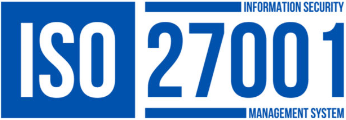Grit, a new psychological construct offers fascinating insight into why some people succeed in their careers while others fail to achieve their goals and full potential.
Angela Duckworth, a psychology researcher at the University of Pennsylvania defines Grit as the capacity to sustain both effort and interest in projects or tasks that take months or longer to complete. It is essentially a combination of passion and perseverance. The latter can best be defined as a “fire in the belly”, or positive energy to achieve and outperform against one’s goals.
Duckworth has found that people who are high in Grit don’t deviate from their goals, even in the absence of positive feedback and in the face of adversity. Grit appears to predict success in many spheres of life and has been linked to important business outcomes such as improved performance, career success and reduced turnover of key talent.
So how can companies incorporate this promising new concept into their talent management practices? Below are 3 ideas to get you started:
Hire people who are passionate about their role and company
The mantra “hire for attitude as well as skill” is widely espoused, yet few recruiters know how to translate this into practical action during the hiring process. One of the ways we help clients do this is to ensure interviews measure not only the required skills, experience and qualification for the role, but also the person’s character strengths and how well these match both the role and company. A good understanding of candidates’ strengths enables the company to predict how gritty they are and whether you will be able to deploy them to take on tasks and assignments beyond their initial job. The most energised candidates who have high levels of passion for the job and company are more likely to remain positive, embrace learning opportunities and stay with the organisation.
Stretch people in areas that energise them the most
Gritty people like being stretched to achieve beyond their comfort zone. However, the wrong type of stretch can actually lead to demotivation and very high levels of turnover, absenteeism and even burnout. We distinguish between two very different types of stretch – positive and negative stretch.
Negative stretch involves challenging work in areas of weakness; in other words, tasks that drain the person’s energy. Although a limited amount of this type of stretch can occasionally be useful to help employees improve in areas of weakness that are limiting their performance, too much is typically demotivating and undermine performance.
Positive stretch involves discovering a person’s character strengths – underlying qualities that energise them and they have potential to become great at – and challenging them to take these to the next level by developing skills, experience and flexibility in the way they apply these. It is important to provide coaching, support and feedback when encouraging people to stretch their strengths to maintain high levels of energy and avoid negative stress, panic and burnout.
Help people cultivate a growth mindset
Perseverance involves working hard to achieve goals and sticking with a task even in the face of immense pressure and setbacks. There are different factors that influence and improve perseverance, but one of the most important appears to be the extent to which people are encouraged to learn from setbacks and take ownership for their self-improvement. People with a growth-oriented mindset are better learners and demonstrate greater agility in adjusting to changes and setbacks than those who don’t believe they can learn new skills and abilities required for success.
Organizations can encourage growth mindsets by creating a supportive environment where failure is seen as part and parcel of the learning process and reasonable mistakes are tolerated. They can also ensure regular and constructive feedback and coaching through engaging performance dialogues and regular manager and co-worker feedback channels to help people learn, grow and improve their performance and ability to learn.
Organizations like Facebook, Photobox and Innocent encourage high levels of sharing and learning by building physical and virtual social platforms to give their people the time and space to initiate and evolve ideas and debate and solve problems. Simple ways to do this include creating social meeting hubs, collaborative spaces and chill-out zones.
James Brook
Further Reading:
Optimize Your Strengths Use Your Leadership Strengths to Get the Best Out of You and Your Team, 2016, James Brook & Dr Paul Brewerton, London: Wiley.
Grit: The Power of Passion and Perseverance, 2016, Angela Duckworth. London: Penguin











